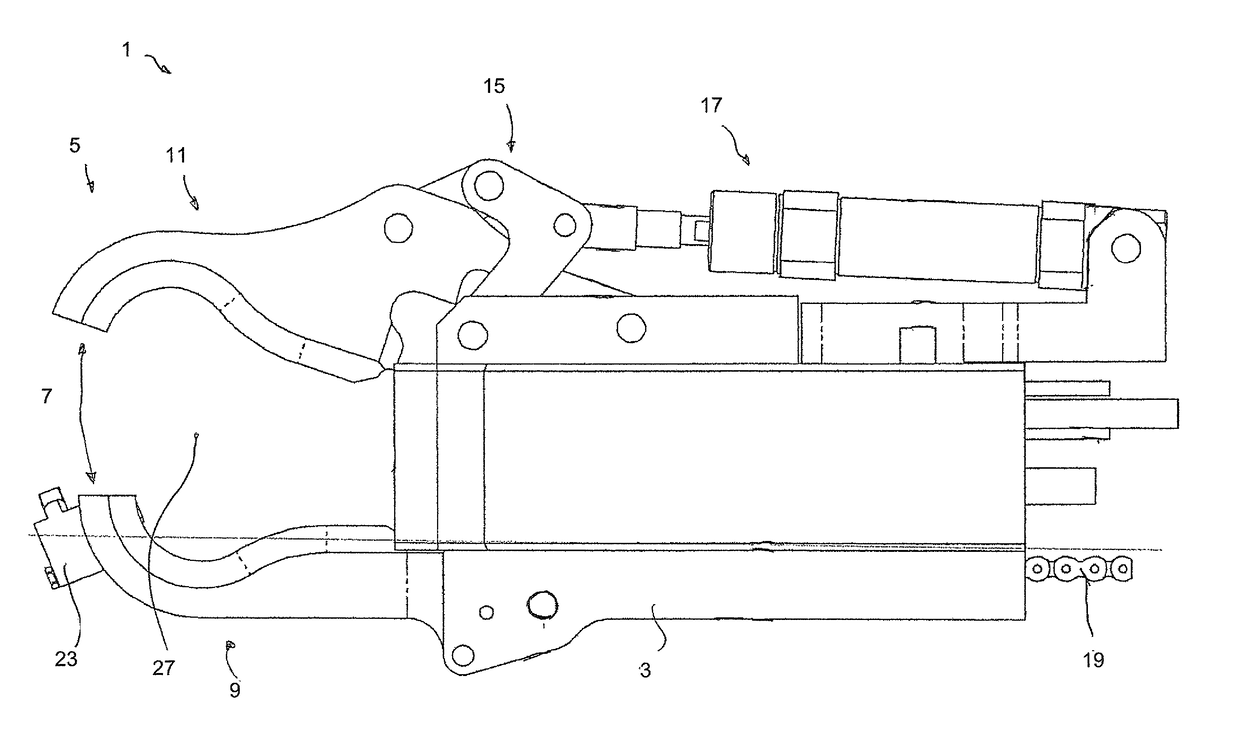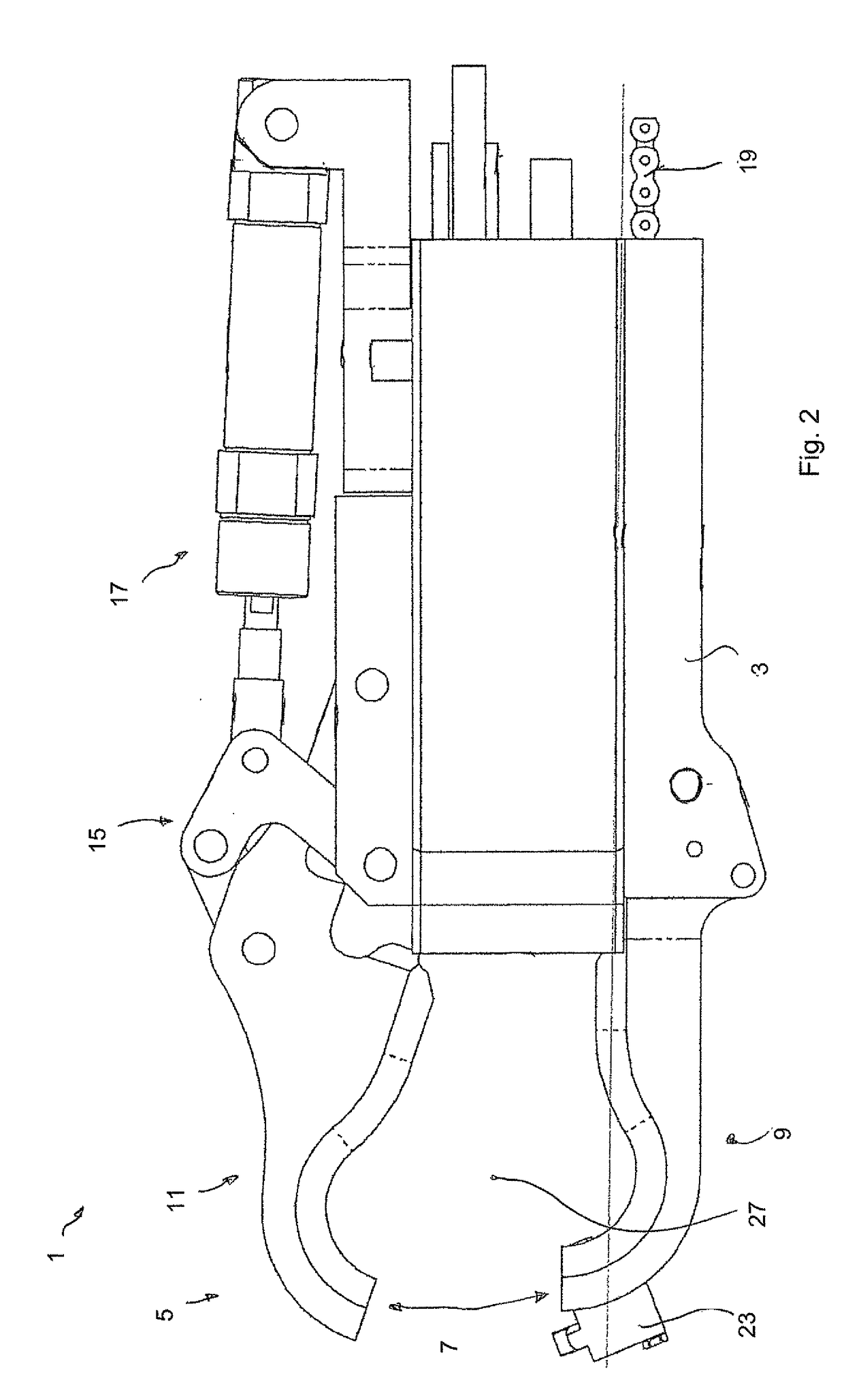Device and method for automatically twisting metal wires, in particular for connecting adjacent, preferably mutually intersecting structure elements
a technology of automatic twisting and metal wires, which is applied in the direction of building construction, building material handling, construction, etc., can solve the problems of exhausting activity for the person performing the activity and also very time-consuming, and achieve the effect of shortening the formed loop
- Summary
- Abstract
- Description
- Claims
- Application Information
AI Technical Summary
Benefits of technology
Problems solved by technology
Method used
Image
Examples
Embodiment Construction
[0054]FIG. 1 shows an apparatus 1 for automatically twisting metal wires. The apparatus 1 has a main body 3. Arranged on the main body 3 at a proximal end of the apparatus 1 is an arcuate wire guide 5. The arcuate wire guide 5 has a closable and openable opening 7 arranged substantially centrally between a first side 9 of the arcuate wire guide 5 and a second side 11 of the arcuate wire guide 5.
[0055]In the illustrated embodiment the first side 9 of the arcuate wire guide is arranged fixedly relative to the main body 3 while the second side 11 of the arcuate wire guide 5 can be deflected by means of a lever mechanism 15 in such a way that the opening 7 is moved from the closed position shown in FIG. 1 into an open position (FIG. 2). In the illustrated embodiment the lever mechanism 15 is driven by means of a pneumatic cylinder 17.
[0056]The arcuate wire guide 5 is of a substantially tongs-like configuration and in the interior of the two sides 9, 11 of the arcuate wire guide has a re...
PUM
| Property | Measurement | Unit |
|---|---|---|
| size | aaaaa | aaaaa |
| lattice-like structure | aaaaa | aaaaa |
| stability | aaaaa | aaaaa |
Abstract
Description
Claims
Application Information
 Login to View More
Login to View More - R&D
- Intellectual Property
- Life Sciences
- Materials
- Tech Scout
- Unparalleled Data Quality
- Higher Quality Content
- 60% Fewer Hallucinations
Browse by: Latest US Patents, China's latest patents, Technical Efficacy Thesaurus, Application Domain, Technology Topic, Popular Technical Reports.
© 2025 PatSnap. All rights reserved.Legal|Privacy policy|Modern Slavery Act Transparency Statement|Sitemap|About US| Contact US: help@patsnap.com



